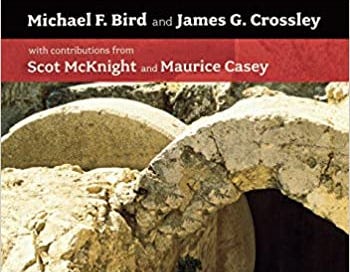How Did Christianity Begin? A Believer and Non-Believer Examine the Evidence (London: SPCK, 2009).
My third book was a collaborative venture with James G. Crossley. It was a sketch of how Christianity began featuring a dialogue between two young scholars, one a confessing Christian, the other an agnostic. It also included responses by Scot McKnight and Maurice Casey who also represented a contrast of belief and unbelief.
We covered several areas: The historical Jesus, the resurrection, the apostle Paul, the Gospels, and earliest Christianity. It included our own essays and critical interactions with each other’s positions.
James is a capable and independent thinking scholar, he posits a very early dating for Mark’s Gospel, has a good knowledge of Jewish law and halakhah, and is an expert on the Bible in British political culture. He wasn’t afraid to hold back and he played the part of the Palpatine to my Luke Skywalker and the Margaret Thatcher to my Jeremy Corbyn.
Suffice to say neither of us changed the other’s minds on anything as far as I can tell. James didn’t repent in sackcloth and ashes and I didn’t renounce the faith and start up a Richard Dawkins fan club.
This was a fun volume to write and most readers have benefitted from the juxtaposition of perspectives. I was hoping this book would prove to be as popular as the book co-written by Marcus Borg (a liberal) and N.T. Wright (a conservative) on Jesus, but alas, it didn’t make much of a splash.





Much like the Counterpoint series and yet different this book gives us a glimpse at scholarship on both sides of the aisle - believer and unbeliever. I particularly like this book because it informs me as to what an agnostic or even atheist believes about Christ and Christianity. So often I hear only from Evangelicals about Non-evangelicals, and it does me well (as well as Christ's church) to hear it "straight from the horse's mouth."